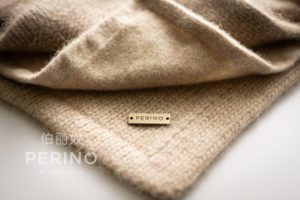The State of Fashion 2022 report predicts that digital is the single biggest opportunity for fashion businesses this year. Social shopping and the Metaverse are creating new opportunities for hosting events and fashion shows, and to connect suppliers, businesses, and consumers. But is this shift going to be the end of luxury knitwear brands and suppliers whose success is attributed to the physical touch and feel of a product? How can manufacturers like Woolyarns stay relevant in the digital world?
The pandemic has been a major catalyst in the rise of social shopping. Social shopping allows brands to market and sell real and digital items through social media sites, and the Metaverse is taking it a step further by allowing brands to host fashion events and rent digital stores to sell physical products and digital products in the form of NFTs.
 The shift to digital platforms is democratising the fashion industry and allowing space for newer and younger designers to make a name in the industry without as much risk, and without even having to create a physical product (NPR 2022). This shift is making luxury fashion more accessible and is shifting the meaning of exclusivity from physical products and invites to live events, to anyone being able to attend events but with exclusive one-off digital products.
The shift to digital platforms is democratising the fashion industry and allowing space for newer and younger designers to make a name in the industry without as much risk, and without even having to create a physical product (NPR 2022). This shift is making luxury fashion more accessible and is shifting the meaning of exclusivity from physical products and invites to live events, to anyone being able to attend events but with exclusive one-off digital products.
Many brands are embracing the digital shift and are using online platforms to target their audiences in user-relevant ways. Hugo Boss, for example, has split the company to target younger audiences who spend a significant amount of time on social media platforms, with Hugo marketing on TikTok to Gen Z consumers and Boss advertising on Instagram to target Millennials. Tommy Hilfiger is also using digital platforms to sell physical products. During the peak of the pandemic in 2020, the brand hosted an online event in China, where digital models showed the products on offer. This attracted 14 million viewers and the brand sold all 1,300 hoodies available in two minutes (State of Fashion 2022). Other brands like Adidas, Nike and Forever 21 are entering into the Metaverse to stay relevant and connected to consumers by selling virtual goods that consumers’ online avatars can then wear. With such a significant industry shift toward digital platforms, what happens when fibres and yarns are no longer relevant to fashion brands?
Not all luxury brands are ready to jump into the metaverse so hastily. Bernard Arnault, CEO of LVHM has said the luxury fashion group is not interested in the metaverse hype (NPR 2022), the group is instead sticking with the traditional luxury fashion notions of exclusivity and mysticism.
In March 2022, the first Metaverse Fashion Week is happening in Decentraland, where brands will be able to exhibit and sell goods. While travel continues to be restricted around the world due to the pandemic, perhaps it will not be long before we are seeing fashion trade shows happening in the Metaverse as well (Martech Alliance 2022). But in the meantime, how do manufacturers of physical goods stay relevant?
The touch of Perino is a great selling point for us and the bands that use our yarns. The digitalisation of the fashion industry means that physical sampling of yarns is becoming less frequent, however, online platforms are allowing us to remain connected to customers and luxury fashion brands, especially while travel restrictions are in place. Like the Metaverse, Perino yarns offer brands something unique and carry the theme of exclusivity. As we have seen not all brands are eager to jump into the Metaverse right away, and we have been finding other ways to modernise our marketing by embracing digital resources to market our yarns.
The most crucial step in yarn manufacturers staying relevant in the digital landscape is through the Shima Yarn Bank. The system shows real scans of the yarns, including colour and texture and the corresponding design programme can simulate a garment without using the physical yarn. This is a wonderful way to sample products without having to knit physical samples in the product development stage. Allowing a change of yarn and colour at the click of a mouse provides flexibility and cost-savings. In the future, this could also be used for digital products in spaces like the Metaverse. The Metaverse presents a great opportunity for Shima’s Yarn Bank and its integrated design programme. It will be interesting to see how the two combine in the future and whether designing a garment with a real yarn will become an onscreen experience rather than a physical one.
With the digital shift in the industry, as well as the continued travel restrictions, the Shima Yarn Bank has allowed us to stay relevant and accessible, while we are unable to attend tradeshows and visit customers.
There is no question that exciting changes are happening in the fashion and textile industry. New technological developments are allowing fashion and design to cross into the Metaverse and are making it easier for younger designers to break onto the scene. While it could spell the end of physical sampling, because onscreen sampling is so cost-effective, flexible, and quick, recent technology like Shima’s Yarn Bank is allowing manufacturers to remain relevant in the modern and growingly digitalised industry. There will always be a need for physical clothing, for meeting basic physiological needs as well as self-expression and communication as in the luxury fashion industry.

By embracing new opportunities and partnering with online platforms like Shima’s Yarn Bank this will surely not be the end of luxury knitwear or Perino’s place in that market.
To see our latest Perino physical colour card and collection book click here and start your journey with the touch of Perino for your next collection.
